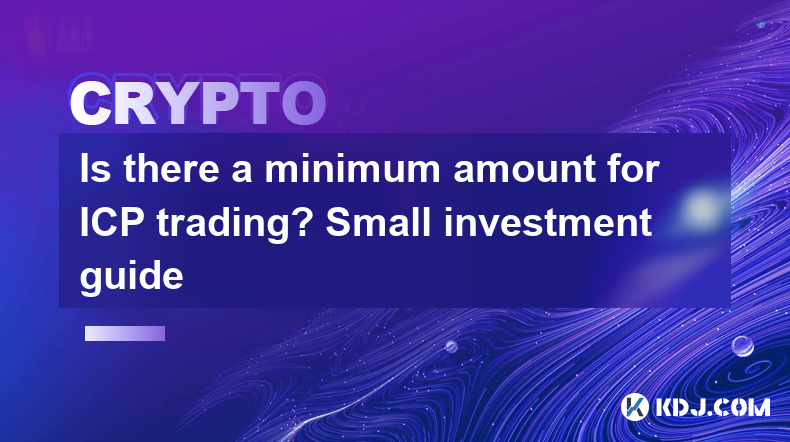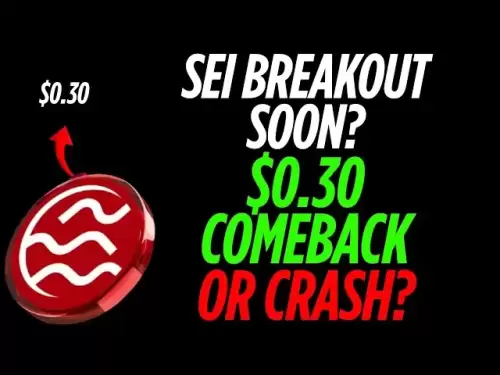-
 Bitcoin
Bitcoin $109,583.2239
0.19% -
 Ethereum
Ethereum $2,583.4612
0.48% -
 Tether USDt
Tether USDt $1.0003
-0.04% -
 XRP
XRP $2.2681
0.70% -
 BNB
BNB $659.9218
-0.52% -
 Solana
Solana $151.4961
-0.37% -
 USDC
USDC $0.9999
-0.02% -
 TRON
TRON $0.2861
1.20% -
 Dogecoin
Dogecoin $0.1718
0.04% -
 Cardano
Cardano $0.5960
-0.07% -
 Hyperliquid
Hyperliquid $40.1233
2.85% -
 Sui
Sui $2.9974
2.48% -
 Bitcoin Cash
Bitcoin Cash $497.1279
-1.76% -
 Chainlink
Chainlink $13.7275
-0.22% -
 UNUS SED LEO
UNUS SED LEO $9.0241
0.70% -
 Avalanche
Avalanche $18.5536
-0.88% -
 Stellar
Stellar $0.2421
1.39% -
 Toncoin
Toncoin $2.8593
-0.51% -
 Shiba Inu
Shiba Inu $0.0...01187
-0.07% -
 Litecoin
Litecoin $90.0023
2.90% -
 Hedera
Hedera $0.1590
2.79% -
 Monero
Monero $322.1495
0.00% -
 Polkadot
Polkadot $3.5453
-1.00% -
 Dai
Dai $1.0000
-0.01% -
 Bitget Token
Bitget Token $4.5733
-1.06% -
 Ethena USDe
Ethena USDe $1.0002
-0.01% -
 Uniswap
Uniswap $7.6345
3.03% -
 Aave
Aave $279.2583
0.47% -
 Pepe
Pepe $0.0...01003
-1.52% -
 Pi
Pi $0.4941
-0.32%
Is there a minimum amount for ICP trading? Small investment guide
You can start trading ICP with as little as $10 on exchanges like Binance, where the minimum order size is 0.001 ICP, making it accessible for small investors.
May 02, 2025 at 05:35 pm

Is there a minimum amount for ICP trading? Small investment guide
Trading Internet Computer (ICP) tokens has become increasingly popular among cryptocurrency enthusiasts. One of the common questions that arise, particularly among those looking to start with a small investment, is whether there is a minimum amount required to trade ICP. In this guide, we will explore the minimum trading amounts for ICP and provide a detailed roadmap for those looking to invest small amounts in this promising cryptocurrency.
Understanding ICP and Its Trading Platforms
Internet Computer (ICP) is a decentralized network that aims to revolutionize the way applications are built and run. It is designed to provide a platform where developers can create and deploy software directly on the internet without relying on traditional centralized services. Trading ICP involves buying and selling its native token, which is also called ICP.
When considering trading ICP, it's important to choose the right platform. Some of the popular exchanges where you can trade ICP include Binance, Coinbase, and Kraken. Each of these platforms has its own set of rules and minimum trading amounts, which can vary based on the type of order you want to place.
Minimum Trading Amounts on Different Exchanges
The minimum amount required to trade ICP can differ significantly depending on the exchange you choose. Let's take a closer look at the minimum trading amounts on some of the most popular platforms:
Binance: On Binance, the minimum order size for trading ICP against USDT (Tether) is typically around 0.001 ICP. However, this can vary based on the specific trading pair and market conditions. It's always a good idea to check the current minimums on the exchange before placing an order.
Coinbase: Coinbase has a user-friendly interface and is popular among beginners. The minimum order size for ICP on Coinbase is around 0.001 ICP. Keep in mind that Coinbase may also have minimum withdrawal amounts, which can affect your trading strategy if you plan to move your ICP to another wallet.
Kraken: Kraken is known for its advanced trading features and competitive fees. The minimum order size for ICP on Kraken is typically around 0.01 ICP. This is slightly higher than some other exchanges, but Kraken's robust security features and trading tools may be worth considering for more experienced traders.
How to Start Trading ICP with a Small Investment
If you're looking to start trading ICP with a small investment, here's a step-by-step guide to help you get started:
Choose the Right Exchange: Based on the minimum trading amounts and your personal preferences, select an exchange that suits your needs. For small investments, exchanges like Binance and Coinbase are good starting points due to their lower minimum order sizes.
Create an Account: Sign up for an account on your chosen exchange. You'll need to provide some personal information and complete the verification process, which can take a few days.
Deposit Funds: Once your account is verified, you can deposit funds into your exchange wallet. Most exchanges allow you to deposit via bank transfer, credit/debit card, or other cryptocurrencies. For small investments, consider using a bank transfer to minimize fees.
Buy ICP: Navigate to the trading section of the exchange and select the ICP trading pair that matches your deposited currency (e.g., ICP/USDT). Enter the amount of ICP you want to buy, ensuring it meets the minimum order size, and place your order.
Monitor and Manage Your Investment: After purchasing ICP, keep an eye on the market and manage your investment accordingly. You can set up price alerts and use trading tools provided by the exchange to help you make informed decisions.
Tips for Small ICP Investors
Investing in ICP with a small amount can be a great way to get started in the cryptocurrency market. Here are some tips to help you maximize your investment:
Diversify Your Portfolio: Even with a small investment, consider diversifying your portfolio by investing in different cryptocurrencies. This can help spread the risk and potentially increase your returns.
Stay Informed: Keep up to date with the latest news and developments in the ICP ecosystem. Understanding the project's roadmap and milestones can help you make better investment decisions.
Use Dollar-Cost Averaging: Instead of investing your entire amount at once, consider using a dollar-cost averaging strategy. This involves investing a fixed amount at regular intervals, which can help reduce the impact of market volatility.
Set Realistic Expectations: Cryptocurrency markets can be highly volatile, so it's important to set realistic expectations for your investment. Don't expect to get rich overnight, and be prepared for the possibility of losing some or all of your investment.
Security Considerations for Small ICP Investors
Security is a critical aspect of cryptocurrency trading, especially for small investors. Here are some security measures you should take to protect your ICP investment:
Use Strong Passwords: Always use strong, unique passwords for your exchange accounts and enable two-factor authentication (2FA) to add an extra layer of security.
Secure Your Wallet: If you decide to move your ICP to a private wallet, choose a reputable wallet provider and keep your private keys safe. Hardware wallets like Ledger or Trezor offer the highest level of security.
Be Wary of Phishing Scams: Phishing scams are common in the cryptocurrency space. Be cautious of emails or messages that ask for your personal information or private keys, and always verify the source before taking any action.
Regularly Update Software: Keep your computer and mobile devices updated with the latest security patches and software updates to protect against vulnerabilities that could be exploited by hackers.
FAQs
Q: Can I start trading ICP with just $10?
A: Yes, you can start trading ICP with as little as $10, depending on the exchange and the current price of ICP. For example, if the price of ICP is around $10, you could buy 1 ICP on an exchange like Binance, which has a minimum order size of 0.001 ICP.
Q: Is it better to hold ICP long-term or trade it frequently?
A: This depends on your investment strategy and risk tolerance. Holding ICP long-term can be a good strategy if you believe in the project's long-term potential. However, if you're comfortable with the risks, frequent trading can potentially yield higher returns but also comes with higher volatility and risk.
Q: How can I withdraw my ICP from an exchange to a private wallet?
A: To withdraw ICP from an exchange to a private wallet, follow these steps:
- Log into your exchange account and navigate to the withdrawal section.
- Select ICP as the cryptocurrency you want to withdraw.
- Enter the amount you want to withdraw and the destination address of your private wallet.
- Confirm the withdrawal and wait for the transaction to be processed, which can take some time depending on the network congestion.
Q: Are there any fees associated with trading ICP?
A: Yes, there are fees associated with trading ICP, which can vary depending on the exchange. Most exchanges charge a trading fee, which is typically a percentage of the transaction amount. Additionally, there may be withdrawal fees if you move your ICP to a private wallet. Always check the fee structure of your chosen exchange before trading.
Disclaimer:info@kdj.com
The information provided is not trading advice. kdj.com does not assume any responsibility for any investments made based on the information provided in this article. Cryptocurrencies are highly volatile and it is highly recommended that you invest with caution after thorough research!
If you believe that the content used on this website infringes your copyright, please contact us immediately (info@kdj.com) and we will delete it promptly.
- House, Trump Bill, Bitcoin Rally: A New York Minute on Macro and Crypto
- 2025-07-04 10:30:12
- Coin Master Free Spins: Your Daily Dose of Links (July 2025)
- 2025-07-04 10:50:12
- Crypto's Dual Lifeline: Bitcoin ETFs Soar as Stablecoins Bolster US Treasuries
- 2025-07-04 10:30:12
- Altcoins in July 2025: Market Momentum and Top Picks
- 2025-07-04 11:10:12
- Qubetics Price Prediction: Analysts See $10-$15 in 2026 - Is It Just Hype?
- 2025-07-04 10:35:12
- LILPEPE: The Meme Coin Primed for Explosive Growth with Blockchain Tech
- 2025-07-04 08:50:13
Related knowledge

How to customize USDT TRC20 mining fees? Flexible adjustment tutorial
Jun 13,2025 at 01:42am
Understanding USDT TRC20 Mining FeesMining fees on the TRON (TRC20) network are essential for processing transactions. Unlike Bitcoin or Ethereum, where miners directly validate transactions, TRON uses a delegated proof-of-stake (DPoS) mechanism. However, users still need to pay bandwidth and energy fees, which are collectively referred to as 'mining fe...

USDT TRC20 transaction is stuck? Solution summary
Jun 14,2025 at 11:15pm
Understanding USDT TRC20 TransactionsWhen users mention that a USDT TRC20 transaction is stuck, they typically refer to a situation where the transfer of Tether (USDT) on the TRON blockchain has not been confirmed for an extended period. This issue may arise due to various reasons such as network congestion, insufficient transaction fees, or wallet-rela...

How to cancel USDT TRC20 unconfirmed transactions? Operation guide
Jun 13,2025 at 11:01pm
Understanding USDT TRC20 Unconfirmed TransactionsWhen dealing with USDT TRC20 transactions, it’s crucial to understand what an unconfirmed transaction means. An unconfirmed transaction is one that has been broadcasted to the blockchain network but hasn’t yet been included in a block. This typically occurs due to low transaction fees or network congestio...

How to check USDT TRC20 balance? Introduction to multiple query methods
Jun 21,2025 at 02:42am
Understanding USDT TRC20 and Its ImportanceUSDT (Tether) is one of the most widely used stablecoins in the cryptocurrency market. It exists on multiple blockchain networks, including TRC20, which operates on the Tron (TRX) network. Checking your USDT TRC20 balance accurately is crucial for users who hold or transact with this asset. Whether you're sendi...

What to do if USDT TRC20 transfers are congested? Speed up trading skills
Jun 13,2025 at 09:56am
Understanding USDT TRC20 Transfer CongestionWhen transferring USDT TRC20, users may occasionally experience delays or congestion. This typically occurs due to network overload on the TRON blockchain, which hosts the TRC20 version of Tether. Unlike the ERC20 variant (which runs on Ethereum), TRC20 transactions are generally faster and cheaper, but during...

The relationship between USDT TRC20 and TRON chain: technical background analysis
Jun 12,2025 at 01:28pm
What is USDT TRC20?USDT TRC20 refers to the Tether (USDT) token issued on the TRON blockchain using the TRC-20 standard. Unlike the more commonly known ERC-20 version of USDT (which runs on Ethereum), the TRC-20 variant leverages the TRON network's infrastructure for faster and cheaper transactions. The emergence of this version came as part of Tether’s...

How to customize USDT TRC20 mining fees? Flexible adjustment tutorial
Jun 13,2025 at 01:42am
Understanding USDT TRC20 Mining FeesMining fees on the TRON (TRC20) network are essential for processing transactions. Unlike Bitcoin or Ethereum, where miners directly validate transactions, TRON uses a delegated proof-of-stake (DPoS) mechanism. However, users still need to pay bandwidth and energy fees, which are collectively referred to as 'mining fe...

USDT TRC20 transaction is stuck? Solution summary
Jun 14,2025 at 11:15pm
Understanding USDT TRC20 TransactionsWhen users mention that a USDT TRC20 transaction is stuck, they typically refer to a situation where the transfer of Tether (USDT) on the TRON blockchain has not been confirmed for an extended period. This issue may arise due to various reasons such as network congestion, insufficient transaction fees, or wallet-rela...

How to cancel USDT TRC20 unconfirmed transactions? Operation guide
Jun 13,2025 at 11:01pm
Understanding USDT TRC20 Unconfirmed TransactionsWhen dealing with USDT TRC20 transactions, it’s crucial to understand what an unconfirmed transaction means. An unconfirmed transaction is one that has been broadcasted to the blockchain network but hasn’t yet been included in a block. This typically occurs due to low transaction fees or network congestio...

How to check USDT TRC20 balance? Introduction to multiple query methods
Jun 21,2025 at 02:42am
Understanding USDT TRC20 and Its ImportanceUSDT (Tether) is one of the most widely used stablecoins in the cryptocurrency market. It exists on multiple blockchain networks, including TRC20, which operates on the Tron (TRX) network. Checking your USDT TRC20 balance accurately is crucial for users who hold or transact with this asset. Whether you're sendi...

What to do if USDT TRC20 transfers are congested? Speed up trading skills
Jun 13,2025 at 09:56am
Understanding USDT TRC20 Transfer CongestionWhen transferring USDT TRC20, users may occasionally experience delays or congestion. This typically occurs due to network overload on the TRON blockchain, which hosts the TRC20 version of Tether. Unlike the ERC20 variant (which runs on Ethereum), TRC20 transactions are generally faster and cheaper, but during...

The relationship between USDT TRC20 and TRON chain: technical background analysis
Jun 12,2025 at 01:28pm
What is USDT TRC20?USDT TRC20 refers to the Tether (USDT) token issued on the TRON blockchain using the TRC-20 standard. Unlike the more commonly known ERC-20 version of USDT (which runs on Ethereum), the TRC-20 variant leverages the TRON network's infrastructure for faster and cheaper transactions. The emergence of this version came as part of Tether’s...
See all articles

























































































